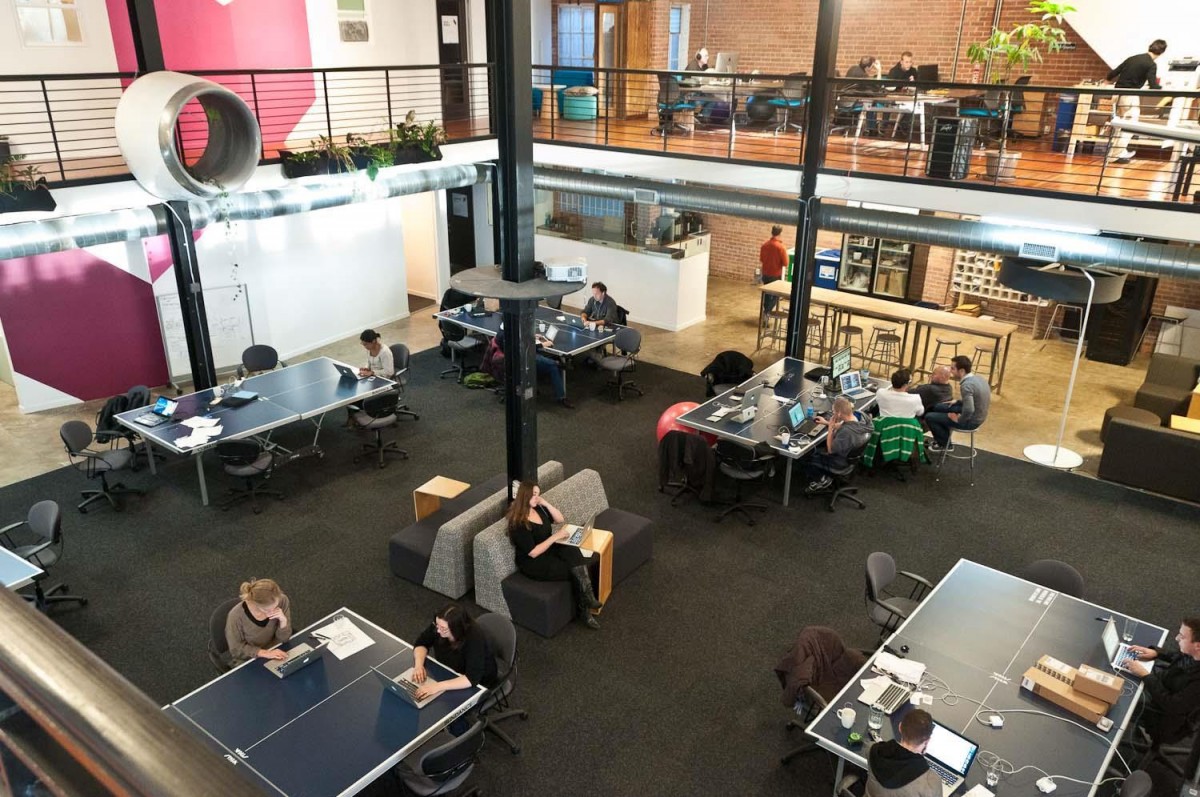Historically, one of the hallmarks of achieving success was to have your own office with your name on the door. This distinction made its way beyond just corporate environments to startups as well, particularly in the tech industry. We’ve all heard the stories of how some of the best known companies today got their start in a garage, like Apple, or in a dorm room at Harvard, like Facebook. This bootstrapping experience has become somewhat of a badge of honor as startups earn their stripes, but eventually, they need access to a bigger space to really take off. Until recently, all of the available options had one thing in common and that was to keep businesses in their own separate compartments within the building. Then coworking spaces came along and turned the whole concept of offices on its head.
Coworking Spaces
What distinguishes a coworking environment from a typical office is that there are usually several businesses operating out of the same space. From their inception in 2005 in San Francisco, coworking spaces have popped up around the globe. From independently run boutique spaces to national chains, coworking spaces can come in a variety of shapes, sizes and features. One great example of this immense diversity is NextSpace, which offers 8 locations along the west coast. Although every location has similar pricing and features, each one has it’s own style and layout. One in particular, even has an infant toddler carespace built in to help members with families achieve a better work-life balance.
Pricing
NextSpace, like most coworking spaces, offers 3 basic options, which they refer to as the Cafe, Workstation and Office memberships. The Cafe plan allows the member to come in and grab an open spot in their common area anytime they wish, 24 hours a day. Upgrading to the Workstation plan gives them a dedicated spot with storage for their gear so they don’t need to lug it around with them as they come and go. The top shelf Office plan provides more privacy with a conventional enclosed office along with a slew of community perks. All membership levels include some access to conference rooms, as well as free coffee/refreshments and wifi. Starting at around $350/month, the membership fees are a total bargain compared to a typical office lease.
Collaborative Culture
Although there are some exceptions, most of the businesses operating from a coworking space try to work together by complementing each others services and helping each other succeed. Some spaces even have resident mentors or gurus that are available to help members with their business strategies. Because everyone shares access to the conference rooms and common areas, it’s not unheard of to see several members team up to host events at the location to promote their products, services or just network. Without the isolation of a typical office environment, creativity in a coworking space is infectious as members brainstorm with each other and hone their pitches.
Accelerators and Incubators
Some startup accelerators and incubators have adopted the coworking space layout as well. The main difference is that these firms require businesses to go through a rigorous selection process, and if accepted, they may even purchase an equity stake in them as they help them grow. Furthermore, they may also be more involved in helping the startup pitch VCs and secure funding.
Conclusion
Although they can seem a bit unorthodox compared to the conventional office we are all familiar with, coworking spaces tend to pack a tremendous value along with some extraordinary perks that you wouldn’t find anywhere else. Maybe the allure of that dedicated private office is unavoidable, but for startups that are looking for a way out of the garage without breaking the bank while simultaneously jumping into a creative, buzzy workspace full of like-minded entrepreneurs, there just isn’t anything quite like a coworking space.

